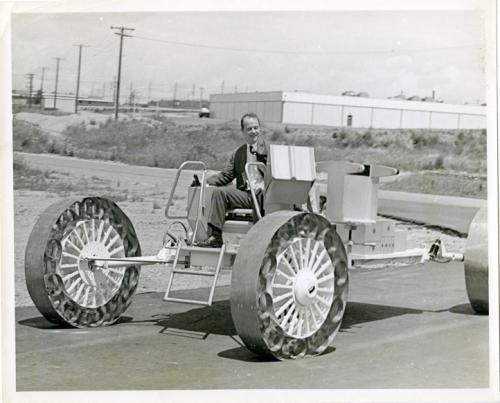
Sydney P. Clark, Jr. passed away quietly in his sleep on Dec. 24, 2016. He was born in Philadelphia on July 26, 1929. He is survived by his wife of 54 years Elizabeth (Dibbie) Frey Clark and by children Edward (Ted) of Canton CT, Jordan (wife Dorothy Pak) of Santa Barbara CA, Elizabeth (Lisa) of Brookfield CT, and Christie (husband Michael O’Hare) of New York City, NY, and nine grandchildren.
In 1947, he graduated from Pomfret School (where he served as a Trustee) and later received both his B.S. (’51) and Ph.D. (’55) in the Department of Geology (later renameed Earth & Planetary Sciences) from Harvard University. His thesis title is Terrestrial Heat Flow in the Swiss Alps, which was supervised by Francis Birch. After a brief period at the Carnegie Geophysical Laboratory in Washington, DC, he became the Sidney J. Weinberg Professor of Geophysics at Yale University in 1963, a position he held until his retirement in 1988. Syd moved to New Haven when the Kline Geology Building opened in 1963 after finishing a Fulbright Fellowship at the Australian National University where he collaborated with A. Edward “Ted” Ringwood and John C. Jaeger.
Syd was one of the pioneers of geophysics. He is known for his early work on mineral physical chemistry and the uplift rates of the Alps using heat flow and radioactive geochronometry, as well as theories of planetary formation that he conducted with his Yale colleague, Karl K. Turekian, and their graduate student, Lawrence Grossman. This later work led to a lunar experiment conducted during three Apollo missions. Syd authored numerous papers and three books:Handbook of Physical Constants (1966),The Structure of the Earth (1972), and Processes in Continental Lithospheric Deformation (1988).
My early memories of my father are different. I was aware of his lunar drill because there was a photograph of him riding the lunar rover or “moon buggy” on a wall above our TV. My uncle, Peter Bell, took me to see the drill at the Smithsonian Air and Space Museum, when I visited him in high school. There was another photograph that was in my father’s office at the Woodbridge family home. It showed a group of geologists standing on and next to a monument showing the location of the equator in Africa. It was taken during a field trip that stretched from the gold fields near Johannesburg to equatorial Africa (which, I believe, was sponsored by NSF in 1969). When he was awarded the Pomfret School Alumni of the year, my father decided to speak about this trip because he saw it as a highlight of his career in geology.
While I was attending Yale as a major in Geology & Geophysics, my father taught the only required class: Mineralogy. The class of 1988 was small and consisted of three majors: Daniel Schrag, Wendy Goldsmith, and myself. The sequencing of classes was such that majors from each class year took Mineralogy together. So the year I took Mineralogy, there were only three enrolled students. Nevertheless, my father’s lecturing style remained the same even if I were the only student present, which was not uncommon given the early scheduled time of the class, the relatively long walk to Kline from the residential colleges, and frequent cold mornings after Halloween. His style of lecturing appealed to me because he stressed the origin of mineral names and their crystal structure. I remember in graduate school speaking with a student who was the TA for mineralogy and was having trouble with the symmetry of wooden blocks. At that point I could still help him.
As I expect many of the old-time Yale faculty remember, my parents hosted numereous parties. The amount of time and effort that my mother spent preparing for these events was substantial. As I grew older, I would join these joyous occasions and found the Yale faculty and their families to be very collegial. These impressions reinforced my earliest memories of the Fall Departmental Picnic at Chatfield Hollow State Park where a faculty member was always willing to lead a walk to examine the Indian Caves.
After retiring from Yale in 1988, my parents moved to the Island of Bermuda. While living there, they became active in a number of garden clubs. I remember learning once that my father had led a group on a ‘Geologic Tour of Bermuda.’ It appeared that he did not enjoy the opportunity. Apparently, a number of the participants wished to learn more about the different types of coral outcrop, a subject that he knew little about and did not find very interesting, as opposed to Darwin’s theory of atoll formation.
My parents traveled frequently in retirement. They often traveled to geologically interesting areas. My wife and I have often discussed to what extent were these trips for my father or for my mother? For instance, did they go to Iceland to purchase Lopi wool for my mother or did they go to see the fascinating geology of the island nation? Knowing my parents, they decided on where to go together, a trait that ensured a happy 54 year marriage.
Jordan Clark ‘88